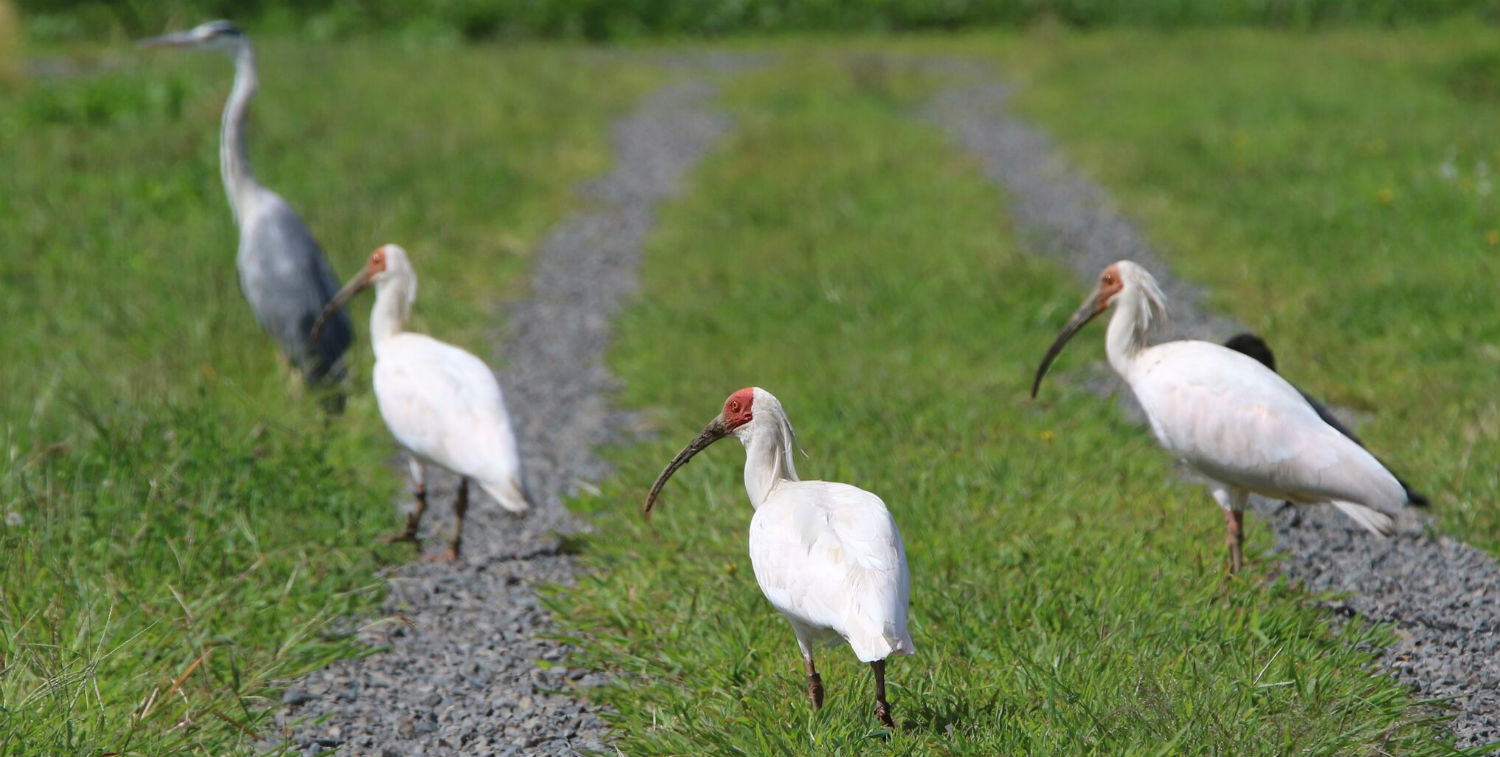Main menu
CEPF is a joint initiative of l’Agence Française de Développement, Conservation International, the European Union, Fondation Hans Wilsdorf, the Global Environment Facility, the Government of Canada, the Government of Japan and the World Bank. A fundamental goal is to ensure civil society is engaged in biodiversity conservation.
Visitez le site français コア情報の日本語翻訳を読むOr use Google Translate to translate the English site to your language:
GTranslate
Celebrating Biodiversity: Asian Crested Ibis
How one bird came back from the brink of extinction
By: Olivier Langrand, CEPF Executive Director
25 September 2017
25 September 2017
The next installment of our occasional blog series, “Celebrating Biodiversity,” in which we highlight the conservation stories of specific species.
The Asian crested ibis (Nipponia nippon) is a bird so fundamental to Japan that it is mentioned in the country’s second oldest history book, Nihon Shoki (The Chronicles of Japan) written in 720. The beautiful bird species, known in Japanese as the toki, used to live across the entire country as well as in southeastern Siberia, central-eastern China and on the Korean Peninsula.
In 1934, Japan noticed the sharp decline of the species’ population—just a few dozen individuals remained in the country—and declared the bird a natural treasure. This official status provided to the Asian crested ibis in Japan was a good start but did not prevent the species’ continued decline: In 1957, only 11 individuals remained.
The reasons for the population decrease were multiple, including deforestation of prime nesting habitat, wetlands converted to rice fields, heavy use of pesticides in agriculture landscapes and hunting. In 1960, the species became so Critically Endangered that it was given the status of internationally protected by ICBP, International Committee for Bird Preservation (now BirdLife International). In 1967, the Niigata Toki Conservation Center was established on Sado Island, Prefecture of Niigata.
In 1981, the Asian crested ibis was considered extinct outside of mainland Japan, and only five birds survived on Sado. These five were captured and put in a captive breeding facility. Unfortunately, the breeding program was not successful and the last wild toki, named Kin, died in 2003 at the age of 36 in the Sado Toki Conservation Center.
With the crested ibis gone from Japan, the scientific community thought the species was extinct from the planet. However, in 1981, seven individuals were found in a remote area of the Quinling Mountains in central-eastern China’s Shaanxi Province.
China quickly developed a conservation program both to protect the species in its natural habitat and breed the bird in a facility. Results were positive and an international conservation program began, with China loaning birds to Japan to breed in captivity. It took a few years, but birds were finally bred successfully at the Sado Toki Conservation Center.
In 2008, 10 tokis raised in captivity were released into the wild. Nineteen more were released the following year. These releases were accompanied by a public awareness campaign to help reduce the use of pesticides in rice production areas.
In 2012, for the first time in 31 years, a pair of released toki reproduced in the wild on Sado. In 2016, the first chicks of a pair of toki born in the wild from previously captive parents were born. After 42 years, the return of wild Asian crested ibis in Japan was a concrete reality.
Though this is clearly a conservation success story, we must remind ourselves that, at one point, we almost lost the Asian crested ibis forever. The hard work of few passionate conservationists in Japan and China brought the species back from extinction.
Today, not only is it possible to visit the Sado Toki Conservation Center, which still breeds the Asian crested ibis, but one can now see wild tokis in the wetlands, grassy areas and rice paddies of Sado.
Let’s hope that this national recognition of the toki will help sustain the conservation program of this species and that it will soon be reintroduced to other locations in Japan.
Let’s also hope that more successful international collaborations like the one between Japan and China will lead to the effective conservation of more species.











